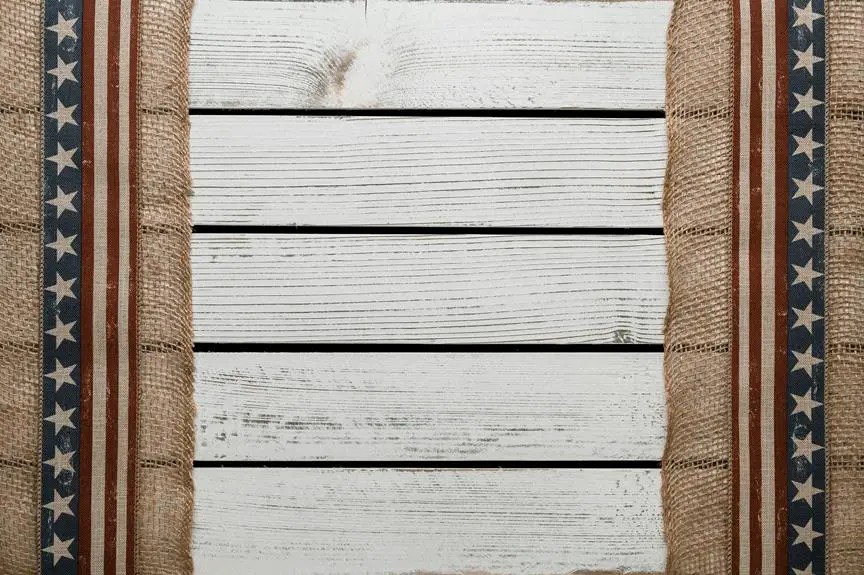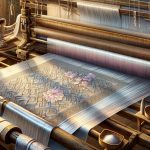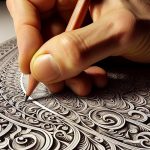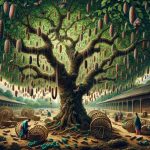You might find it intriguing to explore how sateen fabric, a luxurious alternative to silk, emerged in the late 19th century. Its unique sheen and soft texture stem from innovative weaving techniques that have roots tracing back to the Middle Ages. As trade routes expanded, cotton became more accessible, setting the stage for this versatile fabric to flourish. But what really propelled sateen into the spotlight of modern textiles? Understanding its journey could reveal surprising insights into both its history and its contemporary significance.
Table of Contents
Origins of Sateen Fabric
Sateen fabric originated in the late 19th century as a luxurious cotton alternative to silk, designed to mimic the smooth, glossy finish of its pricier counterpart. You'll find that sateen's unique weaving technique gives it a distinctive luster, resulting from the way the threads are woven. The fabric typically features a higher thread count, allowing it to achieve that soft, silky feel without the high maintenance of silk.
You might appreciate that sateen became popular in the textile industry due to its affordability and versatility. Manufacturers quickly adopted it for a range of applications, from bedding to clothing, making it accessible to a broader audience. As you explore its history, you'll see that sateen often appealed to those who desired elegance without breaking the bank.
Consumers appreciated its durability and ease of care, which further solidified its standing as a go-to fabric. By the early 20th century, sateen had established itself in homes and wardrobes alike, becoming synonymous with comfort and luxury. As you consider the origins of sateen, remember that its evolution laid the groundwork for its ongoing appeal in the modern textile market.
Sateen in the Middle Ages
During the Middle Ages, fabric innovations were crucial, and while true sateen as we know it didn't exist yet, the era laid the groundwork for its development with various luxurious textiles emerging.
You'd find that the period was rich with experimentation in weaving techniques and materials. Silk, wool, and linen dominated, but artisans were also exploring ways to enhance texture and sheen.
Some key aspects of textile advancements during this time include:
- Increased Trade: The expansion of trade routes brought exotic fabrics to Europe, inspiring local weavers.
- Technological Advances: New weaving techniques improved fabric quality, making them more desirable.
- Rich Colors and Patterns: Dyes became more vibrant and patterns more intricate, elevating fabrics to status symbols.
- Luxury Fabrics: Materials like damask and brocade gained popularity, paving the way for future innovations.
These developments not only transformed fashion but also set the stage for the eventual emergence of sateen, blending beauty with functionality in future fabric innovations.
Transition to Cotton
The shift towards cotton fabrics in the late Middle Ages marked a significant turning point in textile production, paving the way for the creation of sateen. As you explore this period, you'll notice that cotton emerged as a favored material due to its softness, breathability, and affordability. This transition wasn't just about changing fabric; it represented a broader evolution in consumer preferences and production methods.
You might find it interesting that the growing popularity of cotton coincided with increased trade routes from the East, which introduced this versatile fiber to European markets. The demand for cotton surged, leading to innovations in spinning and weaving techniques. This not only transformed everyday clothing but also elevated the status of cotton textiles, making them accessible to various social classes.
As you delve deeper, remember that the rise of cotton influenced the development of sateen itself. The lustrous finish and smooth texture that characterize sateen are rooted in this cotton boom. By understanding this transition, you can appreciate how cotton became the foundation for creating new and luxurious fabrics that would define future fashion trends.
Techniques and Weaving Methods
Understanding the techniques and weaving methods used in sateen production reveals how this fabric achieved its distinctive sheen and smoothness, building on the advancements made in cotton textile manufacturing.
At the heart of sateen's appeal is the unique weaving process known as the sateen weave. This method employs a four-over, one-under pattern, which allows more thread surface to be exposed. As a result, you get that luxurious luster that sets sateen apart from other fabrics.
Here are some key aspects of sateen weaving techniques:
- Warp and Weft: Sateen typically uses a higher thread count in the weft, contributing to its soft texture.
- Cotton Quality: Premium long-staple cotton fibers are often used, enhancing durability and comfort.
- Finishing Processes: Sateen undergoes various finishing techniques that polish the fabric's surface.
- Dyeing Techniques: The fabric can be dyed easily, resulting in vibrant colors that maintain their sheen.
These techniques not only create a visually appealing fabric but also ensure its functionality and longevity.
Modern Applications and Trends
Sateen fabric has found its way into a variety of modern applications, from luxurious bedding to stylish apparel, appealing to those who appreciate both comfort and aesthetics.
Today, you'll find sateen sheets and pillowcases that create a soft, inviting sleep environment, enhancing your bedroom's elegance. The fabric's smooth surface not only looks beautiful but also feels great against your skin, making it a popular choice for duvet covers and bed skirts.
In fashion, designers are increasingly using sateen for dresses, blouses, and skirts, where its sheen adds a touch of sophistication. You might choose a sateen garment for special occasions, as its drape and luster elevate your look. Additionally, many brands are now incorporating sustainable practices into their production, offering eco-friendly sateen options that appeal to environmentally-conscious consumers.
Moreover, sateen is also gaining traction in home décor, with cushion covers and table linens that bring a chic touch to your living spaces. As trends shift towards comfort and style, sateen fabric continues to thrive, proving its versatility and enduring appeal in modern design.
Frequently Asked Questions
What Types of Fibers Can Be Used to Make Sateen Fabric?
You can make sateen fabric from various fibers, including cotton, silk, and rayon. Each fiber contributes unique qualities, such as softness and sheen, enhancing the fabric's luxurious appearance and feel for various applications.
How Does Sateen Differ From Satin in Texture and Appearance?
Sateen's texture's softer and more matte than satin, which has a glossy finish. You'll notice sateen feels smoother against your skin, while satin's shine creates a luxurious appearance. Each fabric offers a unique aesthetic experience.
Is Sateen Fabric Environmentally Friendly or Sustainable?
Sateen fabric can be environmentally friendly if it's made from organic cotton or sustainable materials. However, you'll need to check the manufacturer's practices to ensure they're committed to eco-friendly production methods and responsible sourcing.
Can Sateen Fabric Be Washed at Home, or Does It Require Special Care?
You can wash sateen fabric at home, but it's best to use a gentle cycle with cold water. Avoid bleach and high heat when drying to keep it looking its best and to preserve its quality.
What Are the Best Uses for Sateen Fabric in Home Decor?
Sateen fabric's smooth, lustrous finish makes it perfect for luxurious bedding, elegant curtains, and decorative pillow covers. You'll love how it adds sophistication to your space while being soft and inviting to the touch.
- How Does Ring Spun Cotton Affect Garment Fit and Shape Retention? - August 13, 2024
- What Are the Challenges in Producing Ring Spun Cotton? - August 13, 2024
- Is Ring Spun Cotton Suitable for Plus-Size Clothing? - August 13, 2024







